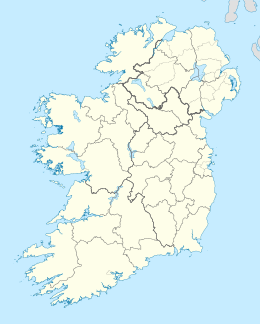Skellig Michael
| Native name: Sceilig Mhichíl | |
|---|---|

Monastery in Skellig Michael
|
|
| Geography | |
| Location | Atlantic Ocean |
| Area | 21.9 ha (54 acres) |
| Highest elevation | 218 m (715 ft) |
| Administration | |
|
Republic of Ireland
|
|
| County | Kerry |
| Demographics | |
| Population | 0 |
| Type | Cultural |
| Criteria | iii, iv |
| Designated | 1996 (20th session) |
| Reference no. | 757 |
| State Party | Ireland |
| Region | Europe and North America |
Skellig Michael (Irish: Sceilig Mhichíl), also called Great Skellig (Irish: Sceilig Mhór), is the larger of the two Skellig Islands, 11.6 kilometres (7.2 mi) west of the Iveragh Peninsula in County Kerry, Ireland. A Christian monastery was founded on the island at some point between the 6th and 8th century and remained continuously occupied until it was abandoned in the late 12th century. The remains of the monastery, and most of the island, became a UNESCO World Heritage Site in 1996.
Skellig Michael was uninhabited before its monastery was founded. Folklore holds that Ir, son of Míl Espáine, was buried on the island, and a text from the 8th or 9th century states that Duagh, King of West Munster, fled to "Scellecc" after a feud with the Kings of Cashel, although it is not known whether these events actually took place.
The monastery's exact date of foundation is not known. The first definite reference to monastic activity on the island is a record of the death of "Suibhini of Skelig" dating from the 8th century; however, Saint Fionán is claimed to have founded the monastery in the 6th century.
The monastic site on the island is on a terraced shelf 600 feet (180 metres) above sea level, and developed between the sixth and eighth centuries. It contains six beehive cells, two oratories as well as a number of stone crosses and slabs. It also contains a later medieval church. The cells and oratories are all of dry-built corbel construction. A carefully designed system for collecting and purifying water in cisterns was developed. It has been estimated that no more than twelve monks and an abbot lived here at any one time. A hermitage is on the south peak.
...
Wikipedia

